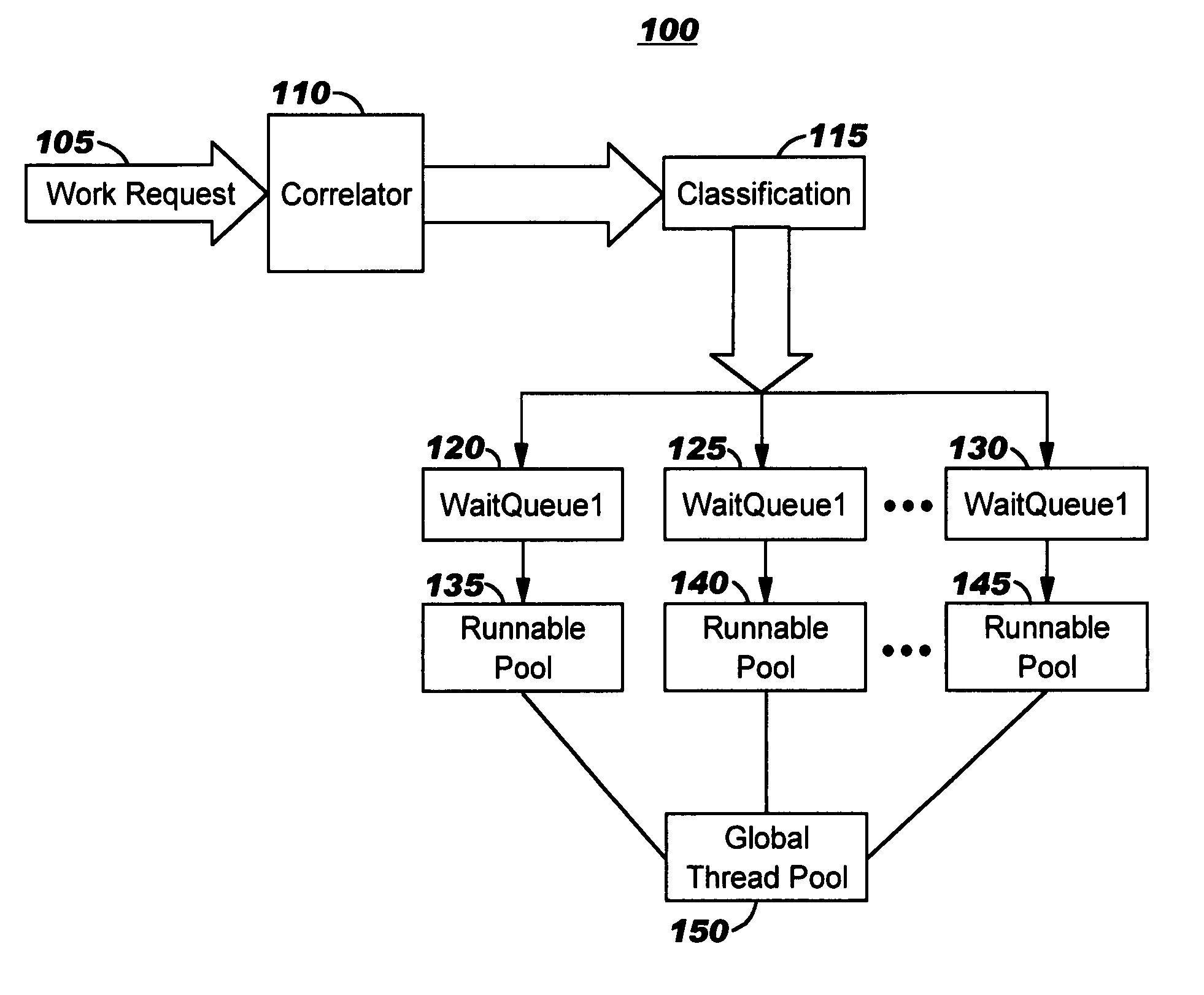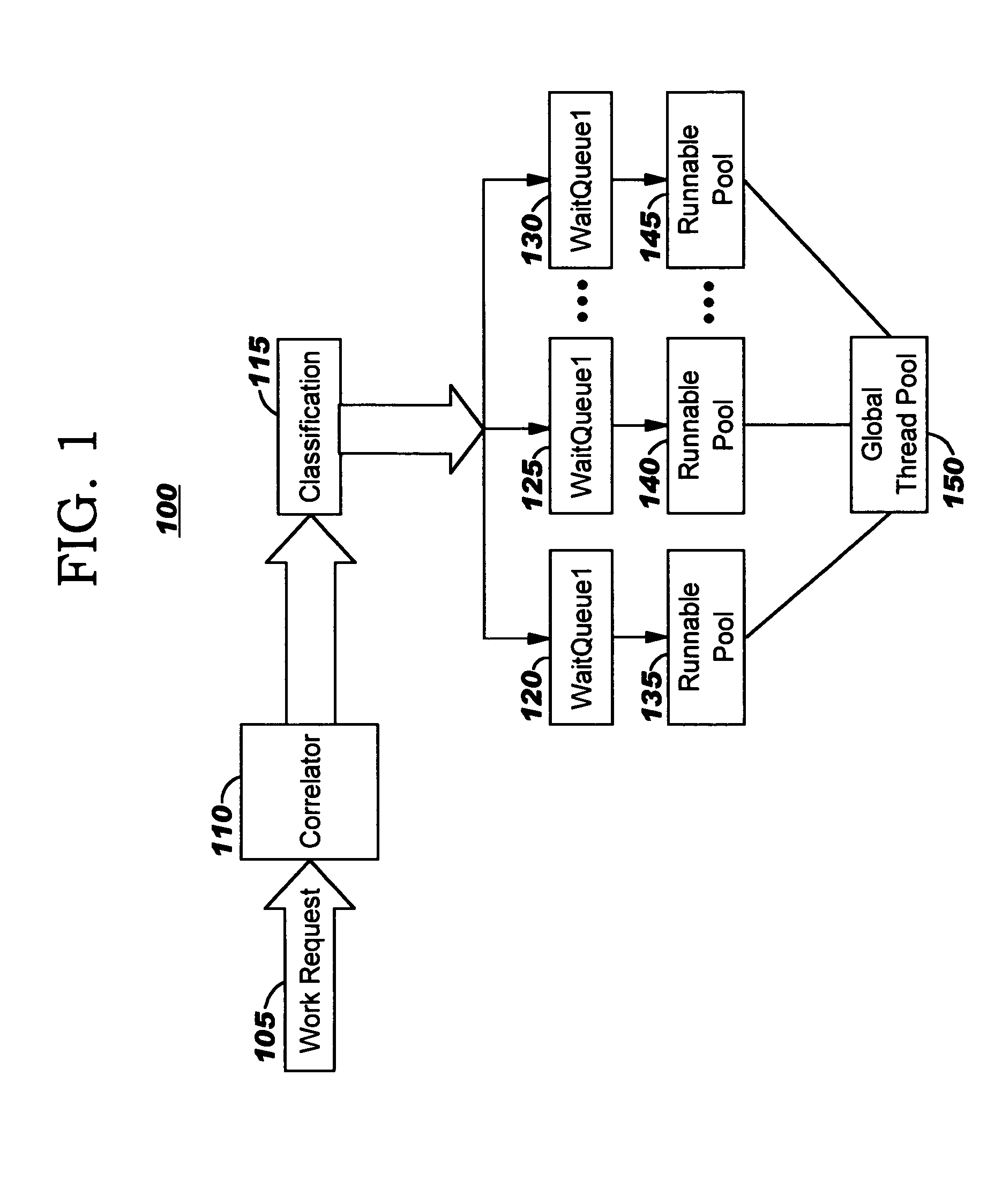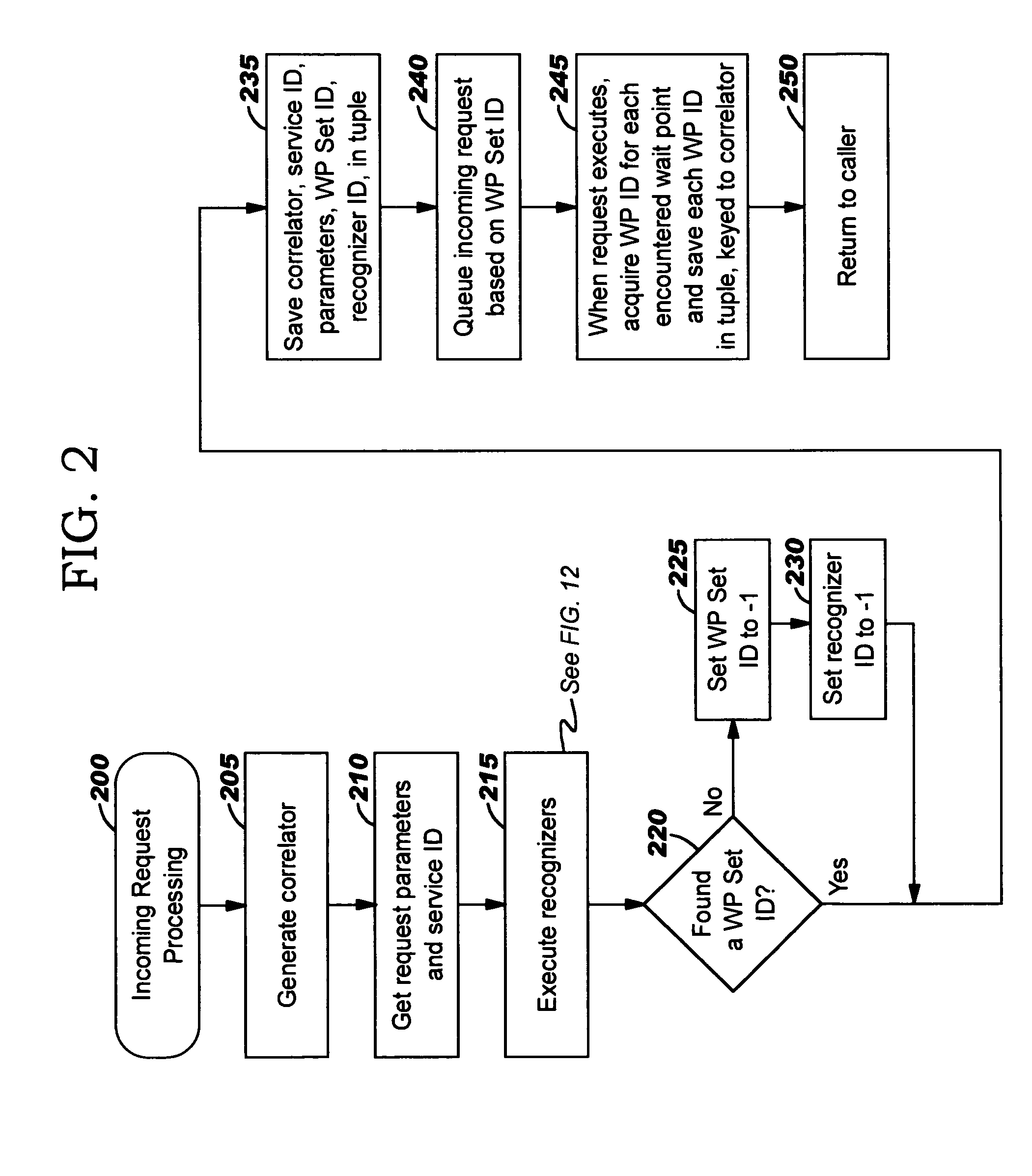Autonomic workload classification using predictive assertion for wait queue and thread pool selection
- Summary
- Abstract
- Description
- Claims
- Application Information
AI Technical Summary
Benefits of technology
Problems solved by technology
Method used
Image
Examples
Embodiment Construction
[0029] The present invention provides improvements for multithreaded servers. Techniques disclosed herein allow requests with less inter-thread contention to run more freely, while enabling those which contend for resources to be programmatically constrained. As a result, thrashing due to inter-thread contention for constrained resources may be reduced. The low-overhead approach of preferred embodiments is designed to efficiently balance throughput across a variety of work unit types in a dynamically-changeable workload which may have heterogeneous characteristics (that is, a workload where a number of different work unit types are serviced and / or where work units experience different computational paths).
[0030] The work units in a system may vary, and may include various types of requests for work. The term “request” is used herein to refer to these various work units.
[0031] It is known in the art to use multiple thread pools for servicing requests in a multithreaded server. Tech...
PUM
 Login to View More
Login to View More Abstract
Description
Claims
Application Information
 Login to View More
Login to View More - R&D
- Intellectual Property
- Life Sciences
- Materials
- Tech Scout
- Unparalleled Data Quality
- Higher Quality Content
- 60% Fewer Hallucinations
Browse by: Latest US Patents, China's latest patents, Technical Efficacy Thesaurus, Application Domain, Technology Topic, Popular Technical Reports.
© 2025 PatSnap. All rights reserved.Legal|Privacy policy|Modern Slavery Act Transparency Statement|Sitemap|About US| Contact US: help@patsnap.com



